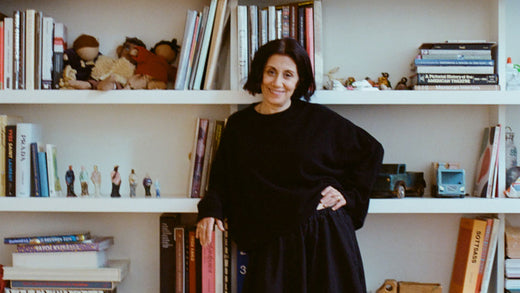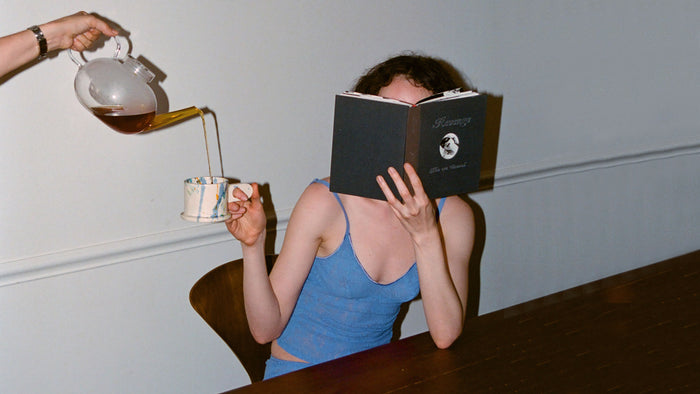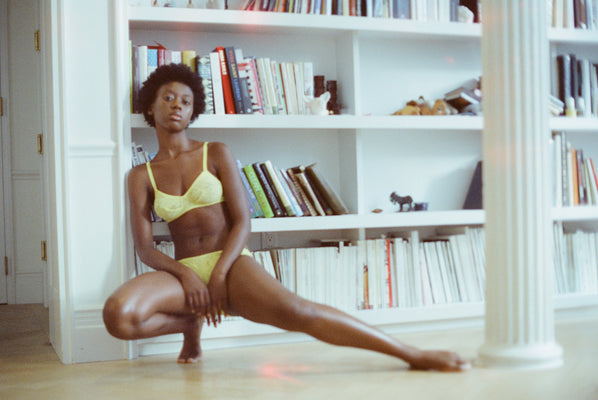JOURNAL
Leisurely Pursuits
October has us getting ready for luxe pajamas, the art of layering, hot toddies and the best reading weather. Discover the titles on our list.

|
by Rebecca Bengal
Strange Hours: Photography, Memory, and the Lives of Artists, Rebecca Bengal considers the photographers who have defined our relationship to the medium. Through generous essays and interviews, she contemplates photography’s narrative power, from the radical intimacy of Nan Goldin’s New York demimonde to Justine Kurland’s pictures of rebel girls on the open road. Bengal brings us closer to pioneering artists and the personal and political stories surrounding their images. She travels with Alec Soth in Minneapolis, searching for the houses where Prince once lived, and revisits Chauncey Hare’s 1979 protest against the Museum of Modern Art. She speaks with Dawoud Bey about his evocative portraits and explores Diana Markosian’s cinematic take on her family’s immigration to the US. Throughout Strange Hours, Bengal’s prose is attuned to the alchemy of experience, chance, and vision that has always pushed photography’s potential for unforgettable storytelling.
|
|
|
by Zadie Smith
From acclaimed and bestselling novelist Zadie Smith, a kaleidoscopic work of historical fiction set against the legal trial that divided Victorian England, about who gets to tell their story—and who gets to be believed. Based on real historical events, The Fraud is a dazzling novel about truth and fiction, Jamaica and Britain, fraudulence and authenticity and the mystery of “other people.” |
|
|
The Dud Avocadoby Elaine Dungy
|
|
|
Death Valleyby Neil Baldwin
In Melissa Broder’s astonishingly profound new novel, a woman arrives alone at a Best Western seeking respite from an emptiness that plagues her. She has fled to the California high desert to escape a cloud of sorrow—for both her father in the ICU and a husband whose illness is worsening. What the motel provides, however, is not peace but a path discovered on a nearby hike. |
|
|
Thermal: Saunas, Hot Springs & Bathsby Lindsey Bro
On the cathartic, humanizing effect of bathing rituals. Lindsey has thought her career, embarked on odyssey’s within the realms of bathing culture, exploring the allure and cultural importance of warm pools, saunas, and J hot springs.
|
|
|
by Hilton Als, Helen Molesworth, David Rimanelli
“Flowers are always working in the service of the passage of time,” writes Helen Molesworth in the opening pages of (Nothing but) Flowers. “In all of the paintings in this book where flowers are depicted, innocently standing in their vases, the minor gestures of gathering, arranging and display can be seen as a verb list dedicated to world-building.” This clothbound volume gathers paintings of flowers by more than 50 artists from Charles Burchfield to Amy Sillman, Joe Brainard to Lisa Yuskavage, who have explored the perennial appeal of this richest and yet simplest of subjects. (Nothing but) Flowers demonstrates the capacity of the humble botanical motif to capture sorrow, stimulate rehabilitation, and guide us through periods of mourning, celebration and rebirth.
Artists include: Gertrude Abercrombie, Marina Adams, Henni Alftan, Ed Baynard, Nell Blaine, Dike Blair, Vern Blosum, Joe Brainard, Cecily Brown, Charles Burchfield, Matt Connors, Andrew Cranston, Ann Craven, Stephanie Crawford, Somaya Critchlow, Verne Dawson, Lois Dodd, Peter Doig, Nicole Eisenman, Ida Ekblad, Minnie Evans, Marley Freeman, Jane Freilicher, Mark Grotjahn, James Harrison, Lubaina Himid, Samuel Hindolo, Reggie Burrows Hodges, Max Jansons, Ernst Yohji Jaeger, Sanya Kantarovsky, Alex Katz, Karen Kilimnik, Zenzaburo Kojima, Matvey Levenstein, Shannon Cartier Lucy, Calvin Marcus, Helen Marden, Jeanette Mundt, Soumya Netrabile, Woody De Othello, Sanou Oumar, Jennifer Packer, Nicolas Party, Hilary Pecis, Richard Pettibone, Elizabeth Peyton, Amy Sillman, Elaine Sturtevant, Tabboo!, Honor Titus, Uman, Susan Jane Walp, Stanley Whitney, Jonas Wood, Matthew Wong, Albert York, Manoucher Yektai and Lisa Yuskavage. |
|
|
by Katy Kelleher
And yet, Kelleher argues that while we have a moral imperative to understand our relationship to desire, we are not evil or weak for desiring beauty. The Ugly History of Beautiful Things opens our eyes to beauty that surrounds us, helps us understand how that beauty came to be, what price was paid and by whom, and how we can most ethically partake in the beauty of the world.
|
 |
|
By Anastasia Miari
Think Stuffed Courgettes from Lesvos, a Cycladic Fourtalia, Corfiot spicy Bourdeto Stew, Ionian pasta dishes, Cretan Dakos salad, Watermelon Cake from Milos.Yiayia maps out the diverse dishes of Greece — far beyond the most commonly-known Moussaka, Greek Salad, and Tzatziki dip – through the fascinating recipes and stories of its Yiayiades.
|
 |




















